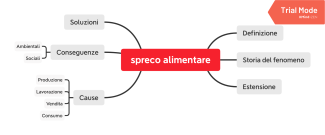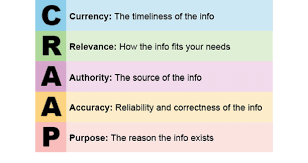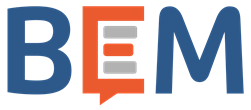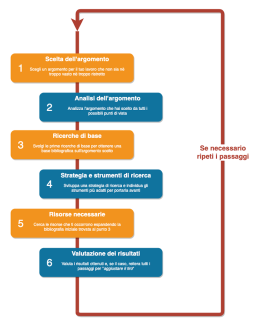Research is a complex process that requires the development of specific skills.
These can be acquired by following a method which is outlined in the image on the side (click to enlarge it) and which we will develop in more detail below.
If your research work requires managing a large bibliography, use a bibliographic reference manager like Zotero. It is a free program that allows you to collect and manage information relating to the documents you will find during your searches. You will be able to insert comments and notes on the saved bibliographic references, create citations in the preferred style, create bibliographies and insert them automatically in your thesis.
It may also be useful for you to write down the used keywords, the queried databases the results you have found and anything else useful for your research in a research log. Keeping track of your searches will help you improve them and avoid repetition. You can create a "research log" in any format you like. Below is a sample model that you can replicate, for example, with Excel:
| DATE | DATABASE | USED KEYWORDS | RESULTS | NOTES |
|---|---|---|---|---|
| 03/07/2020 | Business Source Ultimate | "alternative energy sources" | 12 | Not much relevant |
| 03/07/2020 | Jstor | energy AND (solar OR wind) | 34 | "solar energy" is a subject |
| 20/07/2020 | MathSciNet | 75246 | Need to narrow more, good start |

To choose the topic for your thesis first of all you must be able to precisely define the scope of the investigation, answering the following questions:
- What am I looking for? (e.g. food waste)
- What do I already know and how can I define it?
- From how many points of view can I consider the subject? (e.g. geographical areas, age groups, social groups, types of food, projects to reduce it, national and EU legislation, inherent statistical data, major events, etc.)
In this phase it may be useful to build a concept map (as an example, click on the image on the left to enlarge it), identifying specific terms.
Then try to formulate the research query in terms of a question.
EXAMPLE:
“How has the economic crisis of recent years contributed to reducing food waste?”
Your thesis work will be the reasoned answer to the question, supported by the reading of documents (primary and secondary sources).

As soon as you have identified your research question, you need to focus on a strategy to set up your work. Working carefully at this stage will save you time in future. However, you must immediately understand the specifics of documentary research, which requires you to carefully select documents and evaluate their validity.
First, create a list of keywords that relate to your topic. Make sure you also evaluate other ways of expressing the same topic, working on synonyms. The more specific terms you can find the better.
If you are not familiar with the topic you are dealing with, consult an encyclopedia entry and mark all the references contained therein.
Once the key concepts have been identified, you must combine them within a "search string" using the logical operators AND, OR, NOT:
- AND expresses the intersection between two sets
- OR expresses the logical sum
- NOT expresses the exclusion of a concept
The key concepts may also be translated into another language. To locate the most appropriate technical terms, you can use a bilingual technical dictionary among those available at BEM.
EXAMPLE:
Key concepts related to a research on "food waste":
- Food waste
- Food consumption
- Food leftovers
- Food waste
- Food safety
Matches (note the use of quotes to search for an exact phrase!):
"foodstuffs" AND (consumption OR waste) AND Italy
"food waste" AND "young people"
"food waste" NOT Asia
Once you have identified a research topic and developed a strategy, you need to understand what information can be useful to you and in what types of documents you can find it. So ask yourself:
- What has already been written on the subject?
- What are the most authoritative, appropriate and truly available "sources"?
- Are there databases and specialist resources?
- Are there any authoritative reference websites?
- What primary documents do I need? (In depth: primary and secondary sources)
Remember that you must choose documents not on the basis of their free availability on the net, but on the basis of their intrinsic value. Once you have identified the most pertinent document for your needs, BEM services will help you find it.
But where can you find the documents you need?
BEM offers several tools that you can use for your research.
| Eureka | Eureka (the Discovery Tool of Unito libraries) is a useful tool for finding books, articles and other sources with a single "Google like" search, because it queries resources from multiple sources (including the Unito Catalog), presenting them in a single list of results sorted according to a relevance criterion. Since Eureka carries out searches on a very large database, the list of results can be extended and can be filtered according to various criteria using the filters placed alongside the results. |
| SPECIALIZED DATABASES | On the BEM website you can find the list of subscription databases. The contents of many databases can also be searched with Eureka, but the search interfaces of the individual databases usually offer a whole series of additional and specific functions. Most of the databases can also be consulted from home clicking on Eureka's dedicated button which will ask you to authenticate with your University SCU. A specific list of the most relevant ones in the economic-business and political-social areas is available. |
| GOOGLE SCHOLAR | Google Scholar is a Google multidisciplinary search engine dedicated to academic literature. It queries a variety of resources with a single "Google like" search box, presenting them in a single list of results ordered according to a relevance criterion. Although equipped with few filters to refine the results of your searches, the list of results can still be filtered a bit. PLEASE NOTE: if you are outside the University network, to view the "Trova in Unito" ("find in Unito") link and to download the PDFs of the resources to which we have a subscription, you must activate the "Library links" function as follows:
|
| WEBSITES | Many websites - especially those of academic institutions and official organizations - offer quality and relevant information. |

Are the resources you found reliable, authoritative, and appropriate? Can you recognize the elements of the paratext to identify the typical documents of scientific communication?
Information evaluation serves to evaluate and identify the best information. It may be helpful to use a source authority assessment method, such as the CRAAP method.
The summarizing phase is the one in which you have to organize and re-elaborate the information and draft the final text. The work must be structured in such a way as to foresee at least:
- an INDEX: Writing the INDEX is a very delicate phase of the thesis work, which must necessarily be preceded by the reading and study of the materials that refer to the subject matter. Building a good index is the only starting point for writing a good thesis. The index must also help to develop the thesis by dividing the work into chapters and paragraphs.
- an INTRODUCTION AND CONCLUSIONS: these must be foreseen from the outset, but are only physically prepared when the thesis is completed.
- a FINAL BIBLIOGRAPHY: a research is not scientifically serious if it is not accompanied by a bibliography which indicates in full the titles of all the cited works, the place of publication, the year. In the case of articles, the journal, the year, the issue, the initial and final page must also be indicated. The bibliography, placed in the final section of the document, must be ordered. As a rule, authors are sorted alphabetically; within each author the works are arranged in chronological order (In depth: how to manage your bibliography)
 Biblioteca di Economia e Management
Biblioteca di Economia e Management



